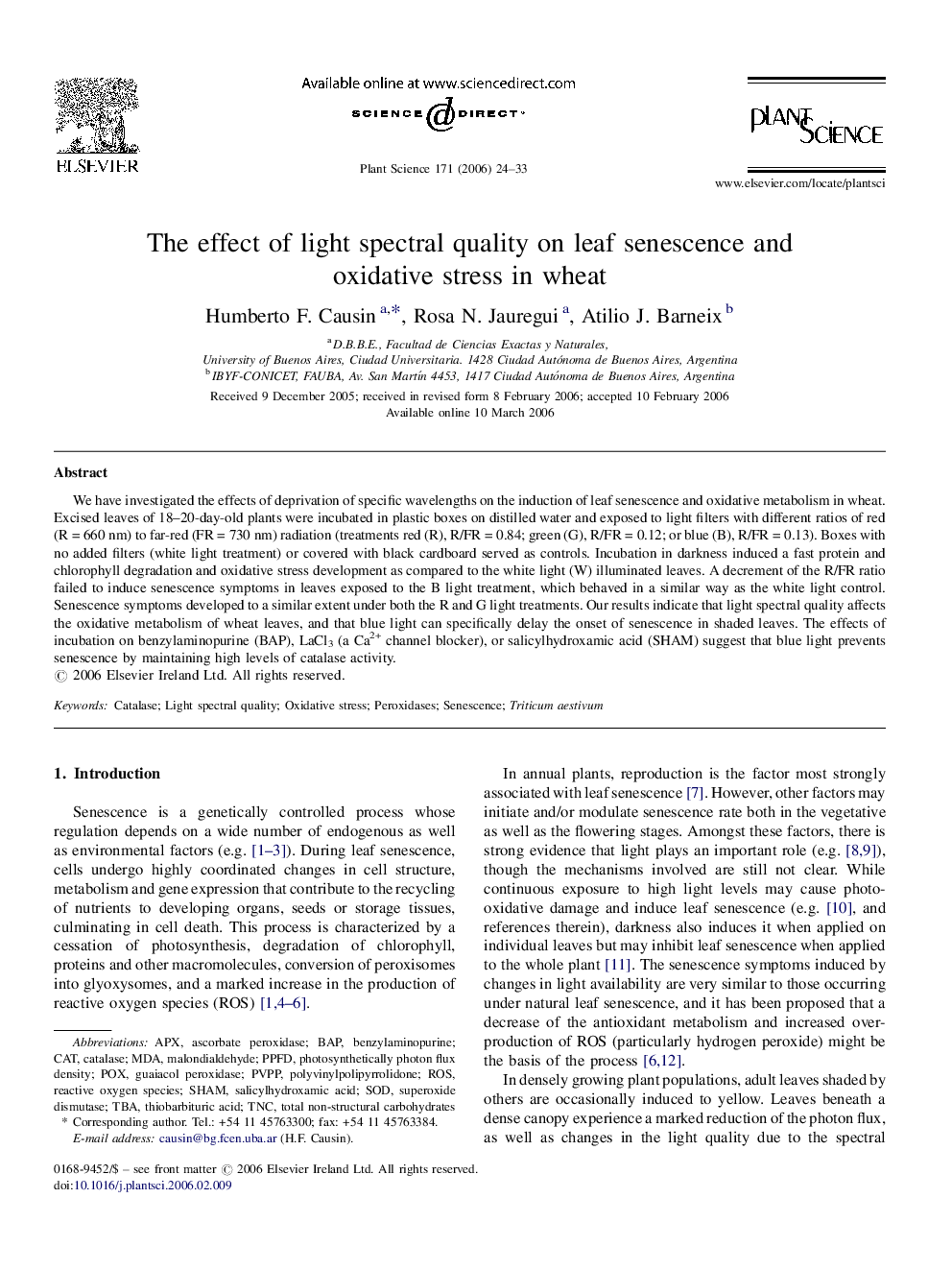| Article ID | Journal | Published Year | Pages | File Type |
|---|---|---|---|---|
| 2018692 | Plant Science | 2006 | 10 Pages |
Abstract
We have investigated the effects of deprivation of specific wavelengths on the induction of leaf senescence and oxidative metabolism in wheat. Excised leaves of 18-20-day-old plants were incubated in plastic boxes on distilled water and exposed to light filters with different ratios of red (RÂ =Â 660Â nm) to far-red (FRÂ =Â 730Â nm) radiation (treatments red (R), R/FRÂ =Â 0.84; green (G), R/FRÂ =Â 0.12; or blue (B), R/FRÂ =Â 0.13). Boxes with no added filters (white light treatment) or covered with black cardboard served as controls. Incubation in darkness induced a fast protein and chlorophyll degradation and oxidative stress development as compared to the white light (W) illuminated leaves. A decrement of the R/FR ratio failed to induce senescence symptoms in leaves exposed to the B light treatment, which behaved in a similar way as the white light control. Senescence symptoms developed to a similar extent under both the R and G light treatments. Our results indicate that light spectral quality affects the oxidative metabolism of wheat leaves, and that blue light can specifically delay the onset of senescence in shaded leaves. The effects of incubation on benzylaminopurine (BAP), LaCl3 (a Ca2+ channel blocker), or salicylhydroxamic acid (SHAM) suggest that blue light prevents senescence by maintaining high levels of catalase activity.
Keywords
Related Topics
Life Sciences
Agricultural and Biological Sciences
Plant Science
Authors
Humberto F. Causin, Rosa N. Jauregui, Atilio J. Barneix,
